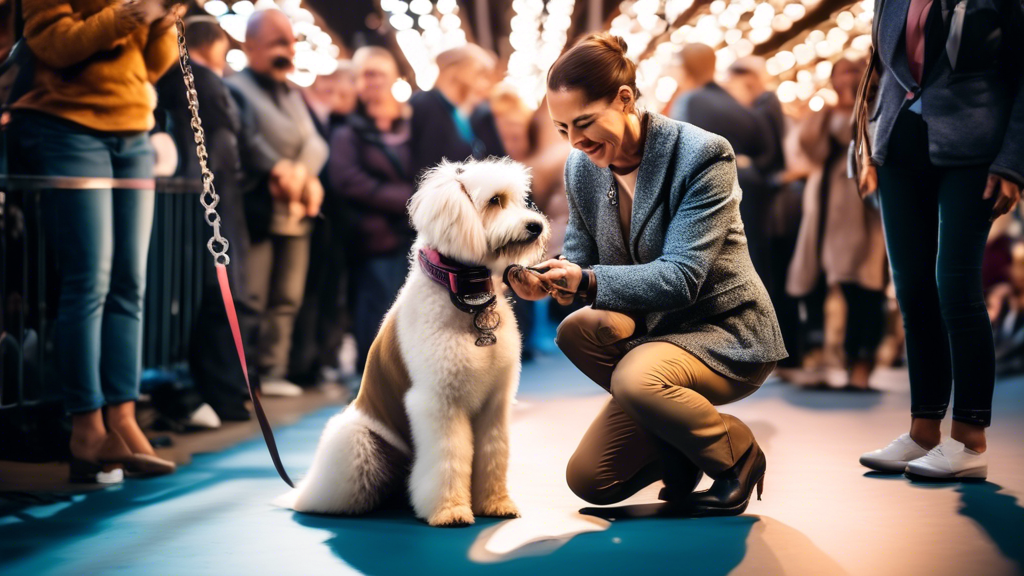Ear Cropping: Essential Tips for Responsible Puppy Owners
Ear cropping is a surgical procedure that involves removing a portion of a dog’s ears. While it is often done for aesthetic reasons, some breeds require cropping for health or behavioral purposes. If you are considering cropping your puppy’s ears, it’s crucial to approach it with responsibility and prioritize the well-being of your pet. In this comprehensive guide, we delve into all aspects of ear cropping, including pre-procedure considerations, aftercare, and effective pain management strategies. By following these essential tips, you can ensure a safe and successful ear cropping experience for your puppy.
Pre-Ear Cropping Considerations and Planning
Ear cropping is a significant decision that requires careful planning and consideration. Here are the key steps to take before proceeding with the procedure:
1. Consulting a Veterinarian
Before deciding on ear cropping, consult with your veterinarian. They can provide invaluable insights on the procedure, potential risks, and pain management strategies. It’s essential to have a comprehensive understanding of what’s involved and any potential implications before proceeding.
2. Understanding the Procedure and Potential Risks
Ear cropping is a surgical procedure that requires anesthesia. Depending on the dog’s breed and the desired aesthetic, the veterinarian will use a scalpel or scissors to remove a portion of the ear. The procedure can cause pain and discomfort, so it’s important to discuss pain management options with your veterinarian beforehand.
Potential risks associated with ear cropping include infection, bleeding, and damage to the ear. It’s crucial to choose a veterinarian with extensive experience and a proven track record in performing ear cropping procedures.
3. Choosing a Reputable and Experienced Veterinarian
The choice of veterinarian is paramount when it comes to ear cropping. Research potential candidates and select a veterinarian with a strong reputation, board certification, and specialized training in ear cropping. Experience is crucial to ensure the procedure is performed safely and effectively, minimizing the risk of complications.
By following these pre-ear cropping considerations, you can prepare for the procedure with confidence and make an informed decision that prioritizes your puppy’s well-being.
The #1 Free Source for Pitbull & Bully Pedigrees!

Aftercare and Maintenance: Essential Steps for Optimal Ear Healing
Ear cropping requires meticulous aftercare to ensure proper healing and prevent complications. Follow these essential tips for optimal ear maintenance post-surgery:
1. Wound Care and Cleaning
- Clean the wound daily: Use a sterile cotton ball or gauze soaked in a gentle antiseptic solution prescribed by your veterinarian. Gently remove any crust or discharge from the edges of the incision.
- Avoid over-cleaning: Excessive cleaning can irritate the wound and delay healing. Clean the wound only as often as directed by your veterinarian.
- Do not use hydrogen peroxide or rubbing alcohol: These harsh liquids can damage delicate tissue and impede healing.
- Keep the wound dry: Moisture creates an ideal environment for bacteria. Gently pat the wound dry with a clean towel after cleaning.
- Monitor for infection: Signs of infection include redness, swelling, discharge, and pain. If any of these symptoms occur, contact your veterinarian immediately.
2. Monitoring and Prevention
- Observe for swelling: Some swelling is normal after surgery, but excessive swelling or a sudden increase can indicate a problem. Monitor the ear’s appearance and contact your veterinarian if swelling persists or worsens.
- Prevent scratching or rubbing: The ears may be uncomfortable after surgery. Prevent your puppy from scratching or rubbing the ears by using an Elizabethan collar (cone).
- Protect from external damage: Avoid rough play or activities that may damage the cropped ears. Ensure the puppy’s crate or bed is comfortable and protects the ears from accidental bumps or scratches.
- Regular follow-up appointments: Schedule follow-up appointments with your veterinarian to assess the healing progress, adjust medication, and remove any sutures as needed.
3. Other Tips
- Provide a soft and comfortable environment: Offer a clean and cozy bed with soft bedding to minimize pressure on the cropped ears.
- Consider pain medication: Your veterinarian may prescribe pain medication to keep your puppy comfortable during the healing process. Follow the dosage and instructions carefully.
- Be patient and consistent: Ear cropping requires patience and consistent aftercare. Follow the instructions provided by your veterinarian and closely monitor your puppy’s progress to ensure optimal healing and prevent complications.
Conclusion
Ear cropping is a significant procedure for puppy owners and requires careful consideration and attention to detail. By adhering to the essential tips outlined in this article, you can ensure the safety, comfort, and well-being of your furry companion during the ear cropping process and recovery period.
Consulting with a reputable veterinarian, understanding the procedure and its potential risks, and providing meticulous aftercare are crucial. Proper wound care, infection monitoring, and preventative measures help minimize complications and promote optimal healing. Regular follow-up appointments ensure the ears heal correctly and any concerns are addressed promptly.
Remember, ear cropping is a lifelong commitment and should only be performed with the best interests of the puppy in mind. By following these essential tips, you can provide your puppy with a safe and comfortable experience during and after the procedure.













Leave A Comment